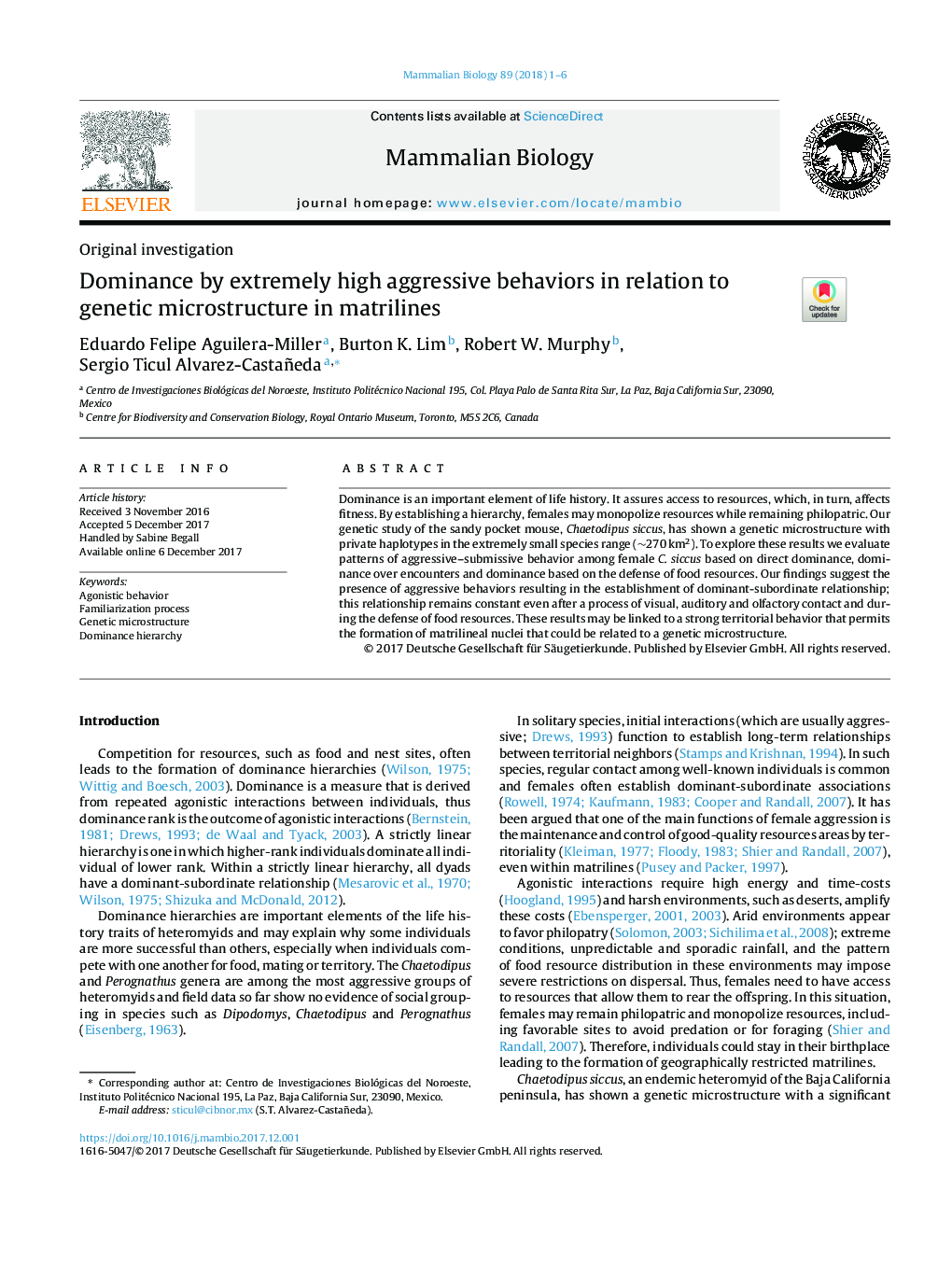| Article ID | Journal | Published Year | Pages | File Type |
|---|---|---|---|---|
| 8475675 | Mammalian Biology - Zeitschrift für Säugetierkunde | 2018 | 6 Pages |
Abstract
Dominance is an important element of life history. It assures access to resources, which, in turn, affects fitness. By establishing a hierarchy, females may monopolize resources while remaining philopatric. Our genetic study of the sandy pocket mouse, Chaetodipus siccus, has shown a genetic microstructure with private haplotypes in the extremely small species range (â¼270Â km2). To explore these results we evaluate patterns of aggressive-submissive behavior among female C. siccus based on direct dominance, dominance over encounters and dominance based on the defense of food resources. Our findings suggest the presence of aggressive behaviors resulting in the establishment of dominant-subordinate relationship; this relationship remains constant even after a process of visual, auditory and olfactory contact and during the defense of food resources. These results may be linked to a strong territorial behavior that permits the formation of matrilineal nuclei that could be related to a genetic microstructure.
Related Topics
Life Sciences
Agricultural and Biological Sciences
Animal Science and Zoology
Authors
Eduardo Felipe Aguilera-Miller, Burton K. Lim, Robert W. Murphy, Sergio Ticul Alvarez-Castañeda,
